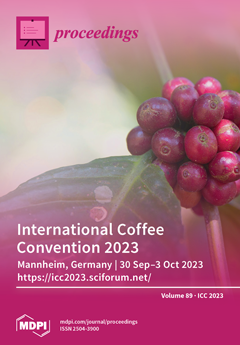Need Help?
Proceedings, 2023, ICC 2023
International Coffee Convention 2023
Mannheim, Germany | 30 September–3 October 2023Volume Editors:
Dirk W. Lachenmeier, Chemical and Veterinary Investigation Agency Karlsruhe
Steffen Schwarz, Coffee Consulate Mannheim
Philipp Weller, Mannheim University of Applied Sciences
Adriana Farah, Federal University of Rio de Janeiro
- Issues are regarded as officially published after their release is announced to the table of contents alert mailing list.
- You may sign up for e-mail alerts to receive table of contents of newly released issues.
- PDF is the official format for papers published in both, html and pdf forms. To view the papers in pdf format, click on the "PDF Full-text" link, and use the free Adobe Reader to open them.
Cover Story (view full-size image):
The International Coffee Convention 2023 was held in Mannheim, Germany from September 30th to October 3rd. The event brought together professionals, experts, and enthusiasts from around the globe to
[...] Read more.
The International Coffee Convention 2023 was held in Mannheim, Germany from September 30th to October 3rd. The event brought together professionals, experts, and enthusiasts from around the globe to examine the often-overlooked aspects of coffee and its by-products. Attendees participated in ten captivating sessions, informative keynotes, and talks from more than 25 renowned experts. Topics covered included climate change, shifting consumer preferences, sustainability, biodiversity, and more. The event also featured networking opportunities, and evening programs. Attendees had the chance to build connections and expand their reach within coffee science and industry. Attendees left the event with a deeper understanding of the coffee industry and its challenges. They also gained new insights into how to create a more sustainable coffee world.
Previous Issue
Next Issue
Issue View Metrics
Multiple requests from the same IP address are counted as one view.



